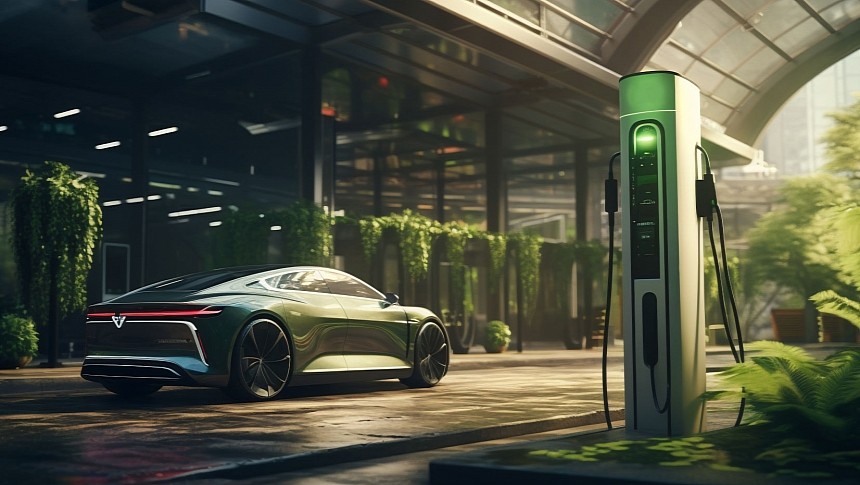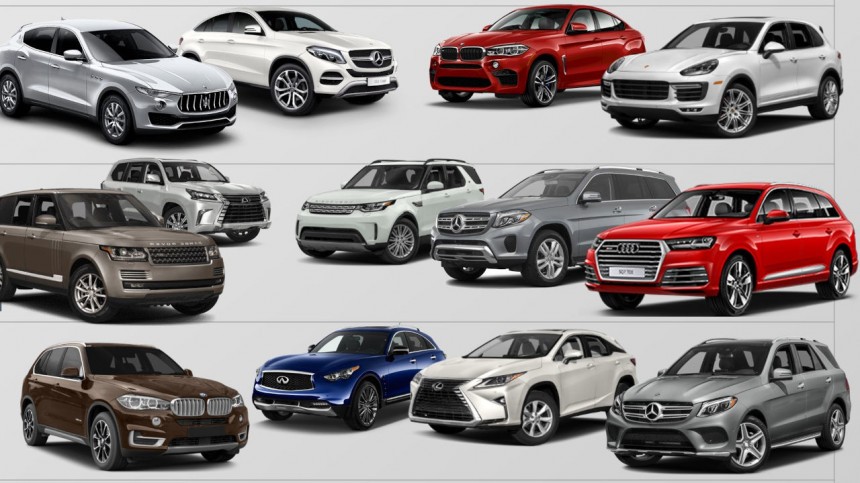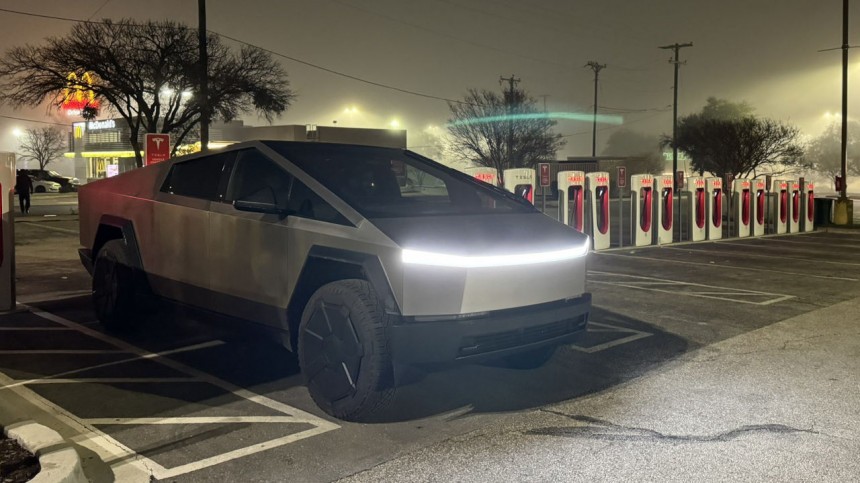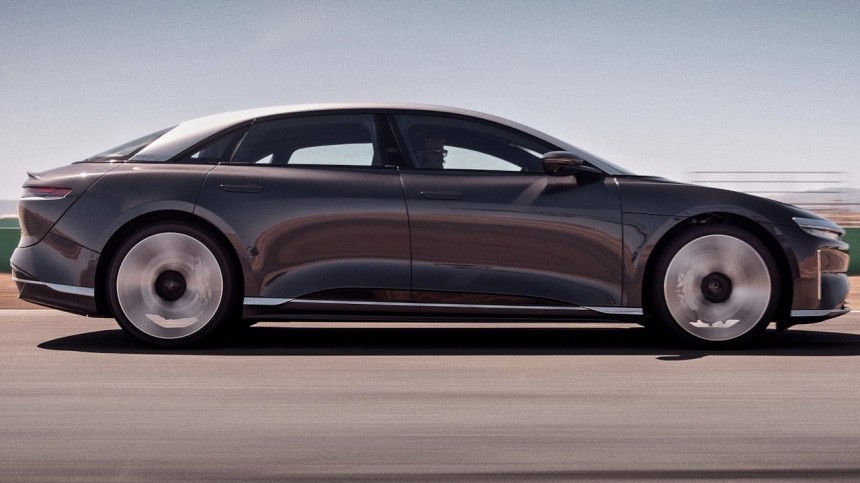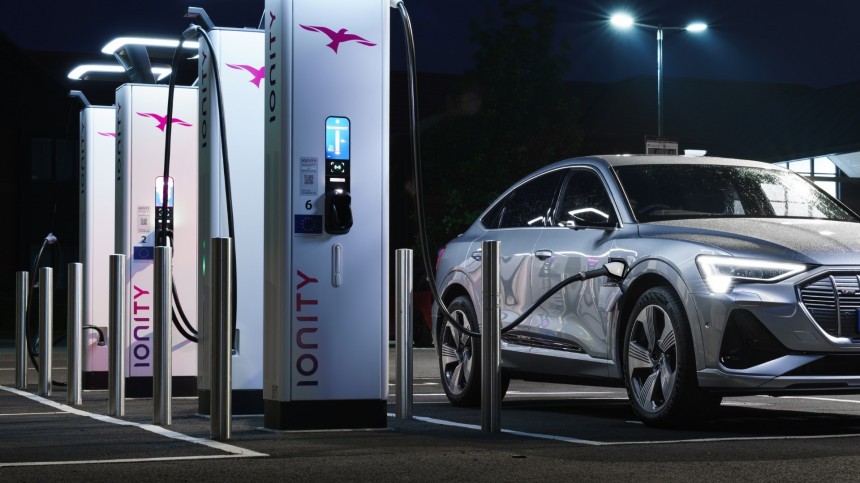It may be a surprise that an electrohead like me is not trying to convince people that EVs' range issues are not a big deal. On the contrary, in the first part of this editorial, I even used the storytelling method to emphasize this misconception by presenting you with my example and a flawed comparison between an EV and an ICEV. And now I'll flood you with more information favoring this whole "range anxiety" propaganda.
It would be a mistake to generalize the comparison between a tiny low-range EV like Dacia Spring and a larger gasoline compact car, but it actually mirrors popular wisdom pretty well when people are tempted to buy an electric car. Almost everybody relates to rumors, to their own experience with using an internal combustion car, and, of course, we all have high and mostly unrealistic expectations from a different technology.
Remember that 2023 marked another premiere: it was the first time that SUV sales were more than 50% of the global passenger car sales. That's because customers want an "All-in-One" car that provides as much space, safety, and an adventure feel as possible for the money they are willing to spend. Heck, even my Spring looks like a little SUV, with a ground clearance of 151 mm / 5 inches!
Inherently, the SUV style makes you want to go on long journeys, and the marketing agencies simply cross the lines, emphasizing the "freedom" an SUV grants you. Thus, people are willing to pay more for that feeling. But, at the same time, they are not willing to compromise on the car's range because freedom and boundaries are not a match.
Unfortunately, this is only a theory based on statistics. While I'm convinced that most Americans drive a few miles daily, I'm also sure that on weekends or vacations, most of them go on long journeys, driving hundreds of miles daily. One cannot expect a regular driver to change his habits overnight just for the sake of reducing pollution.
Also, remember that EPA's range values are optimistic most of the time, and they can lower drastically when high-speed, cold weather or towing is involved. Different tests and statistics show that, on average, the real-world range of EVs is 20-30% lower than the EPA's values – so the median EV range is more likely around 180-215 miles (290-345 km).
Of course, consumption values of internal combustion vehicles are also higher than official data, and sometimes by a higher percentage. But the real-world range of ICEVs is still better, or even far better than their EV counterparts. That's how it is, at least until solid-state batteries become the new norm.
At this point, I can't omit the negative buzz over poor range results for the hyped Tesla Cybertruck. While the dual-motor variant with a 123 kWh battery pack has a 320 miles EPA range (515 km), a YouTuber managed only 254 miles (408 km) on a highway test, with an average speed of 70 mph (112 kph). That's 20% less than official figures.
Another YouTuber towed a Model Y on a trailer, totaling around 6,000 lbs (about 2.7 tons), for only 160 miles (257 km) until the battery was depleted. The latest towing test, this time in winter time and with a payload of 11,000 lbs (almost five tons!), resulted in a range of just 103 miles (165 km).
Thanks to official data, you can easily understand the difference between the public's expectations and reluctance because of all these independent tests that quickly became viral. Inherently, the first thing that comes to mind is that an ICE truck is clearly the better option in terms of range.
Of course, I agree that most of us use our cars on long journeys less than 5-10% of the whole time we own that vehicle. So, 90-95% of the time, an EV will do just fine for our daily commute. But remember what marketing "trained" your brain to think: those long journeys are the most important thing you paid for.
We could use the train or airplane for those long journeys, but your car is usually more convenient. It's your refugee, your personal place; it allows you to stop wherever and whenever you want, and so on. I'd probably be a billionaire if I could reverse-engineer this thinking!
But wait, EPA tells us there's a bunch of electric cars on the market that provide ranges of more than 300 miles (480 km). Mind you, they are "estimated EPA ranges," but this is just a detail. Also, "300 miles" is considered by many to be the psychological line that most customers would cross – which, frankly, is not the case, as last month's drop in interest for EVs proves.
The best EPA range in the US is 516 miles (830 km), and it comes from the more than $127,000 / €117,000 Lucid Air Grand Touring luxury sedan. I'm sure it'll take you just a few seconds to give me several examples of ICE or hybrid vehicles that match Lucid's range and are even more affordable.
At this price level, I doubt anyone cares too much about slashing pollution, so the buying decision is more about the wow factor, the coolness, or the high-tech affinity. Keep in mind, though, that rich people who afford to buy a hundred-grand toy-on-wheels are also damn pretentious. And the excellent range with no hassle is high on their list.
Then there's the Tesla Model S and Rivian R1S and R1T, with a more than 400 miles (640 km) EPA-rated range and price tags of more than $70,000 / €64,000. There are a bunch of similar ICE or hybrid vehicles out there with this range but at a more affordable price.
The same goes for many other EVs with EPA-rated range of more than 300 miles (480 km), like the Hyundai IONIQ 6, Mercedes EQS, Tesla Model X, BMW iX, Ford F-150 Lightning, Chevy Blazer EV, and so on. In short, an excellent value for the range of an expensive EV is just a typical value for much more affordable ICE and hybrid cars.
For the moment, I want to point out that fast-charging an EV's battery on long journeys requires another compromise: delivery of the charger's full power is happening until the battery reaches the 80% charging limit. To "fill up" the rest of 20% will take more time because the charger's power drops drastically to maintain the battery's longevity.
That's the way it is, and it simply means that on those long journeys, you must stop to charge the battery sooner than you thought. And I'm not done: experts say you should also avoid less than 20% battery discharge. Keeping the charge/discharge between 20% and 80% is the golden rule for a long-lasting battery.
So, being a good catholic in the EV world means that you should rely only on 60% of the energy level of your battery! Which translates to an expected real-life range on long journeys of only about half of the EPA-estimated range. So, consider slashing that median EV range for 2023 models of around 270 miles (434 km) to a more realistic 150 miles (240 km), right?
It just came to my mind an adventure test I did some years ago with a 40 kWh battery Nissan Leaf in the wintertime. We were a team of two drivers, and it took us several stops for so-called fast charging and a whole day to go on a 500 km / 300-mile trip. In the same harsh conditions, my gasoline family car needs only one stop for refueling and around 8 hours to reach the destination with much more psychological comfort.
Today, we think we have no more time for critical thinking, and we believe too easily short and simple assertions, especially when they are taken out of context. This is what I did earlier: I showed you that using an EV on long journeys will probably require stopping every 100-150 miles (160-240 km), or less on cold days, for around half an hour to charge the battery.
Depending on your usage habits, this is an unacceptable hassle or an okay-ish compromise. I reckon that on those long trips to my daughter's grandparents, I'd need to replace the current ICE family car with a probably three or four-fold more expensive EV.
This leads to the observation that there are so many really cheap used ICE cars with better range than those of the most affordable EVs, which are several times more expensive. Despite all the objective EV advantages I can think of, this flawed comparison beats them all.
I intended this editorial to be a constructive criticism of "range anxiety," not another weapon for electromobility naysayers. It's also meant to make you reflect on more things related to the subject, going beyond "the ICE has more range than the EV."
How about reducing the fuel tank capacity to force you to refill every 100 miles (160 km)? Or how about truly taxing gas exhausts that poison the air we breathe? Or simply ban all the ICE cars from the cities? I know these are not popular ideas, but they could spark constructive ones. You can just try it for yourself.
In the meantime, please don't unquestioningly believe those forecasting the doom of electric cars. Yes, EV market growth is slow, but consider the global context. Yes, EVs still have some downsides compared to ICE vehicles, but there are also many advantages.
Please inform from trusted sources and take time to look over your priorities. There's an increasing chance that the new car you want that mostly fits your needs is an electric car, after all. And you can even conclude that the so-called low range is not the devilish argument I focused on earlier.
Remember that 2023 marked another premiere: it was the first time that SUV sales were more than 50% of the global passenger car sales. That's because customers want an "All-in-One" car that provides as much space, safety, and an adventure feel as possible for the money they are willing to spend. Heck, even my Spring looks like a little SUV, with a ground clearance of 151 mm / 5 inches!
Statistics sound great, but…
EPA released a study recently on the median EV range for 2023 models sold in the US: it is now 270 miles (434 km), which is 13 miles (21 km) more than in 2022. Theoretically, it's more than an average week's drive, as the Department of Transportation tells us that the average US driver travels less than 40 miles (64 km) daily.Unfortunately, this is only a theory based on statistics. While I'm convinced that most Americans drive a few miles daily, I'm also sure that on weekends or vacations, most of them go on long journeys, driving hundreds of miles daily. One cannot expect a regular driver to change his habits overnight just for the sake of reducing pollution.
Also, remember that EPA's range values are optimistic most of the time, and they can lower drastically when high-speed, cold weather or towing is involved. Different tests and statistics show that, on average, the real-world range of EVs is 20-30% lower than the EPA's values – so the median EV range is more likely around 180-215 miles (290-345 km).
Of course, consumption values of internal combustion vehicles are also higher than official data, and sometimes by a higher percentage. But the real-world range of ICEVs is still better, or even far better than their EV counterparts. That's how it is, at least until solid-state batteries become the new norm.
Another YouTuber towed a Model Y on a trailer, totaling around 6,000 lbs (about 2.7 tons), for only 160 miles (257 km) until the battery was depleted. The latest towing test, this time in winter time and with a payload of 11,000 lbs (almost five tons!), resulted in a range of just 103 miles (165 km).
Thanks to official data, you can easily understand the difference between the public's expectations and reluctance because of all these independent tests that quickly became viral. Inherently, the first thing that comes to mind is that an ICE truck is clearly the better option in terms of range.
Long-range batteries come with a too-hefty price tag
I myself am an electrohead and almost a preacher for spreading the electromobility. But I'm not an extremist; I simply can't advise you to pay too much for a car that doesn't fit your needs, especially for the long journeys you expect to use it on.Of course, I agree that most of us use our cars on long journeys less than 5-10% of the whole time we own that vehicle. So, 90-95% of the time, an EV will do just fine for our daily commute. But remember what marketing "trained" your brain to think: those long journeys are the most important thing you paid for.
We could use the train or airplane for those long journeys, but your car is usually more convenient. It's your refugee, your personal place; it allows you to stop wherever and whenever you want, and so on. I'd probably be a billionaire if I could reverse-engineer this thinking!
But wait, EPA tells us there's a bunch of electric cars on the market that provide ranges of more than 300 miles (480 km). Mind you, they are "estimated EPA ranges," but this is just a detail. Also, "300 miles" is considered by many to be the psychological line that most customers would cross – which, frankly, is not the case, as last month's drop in interest for EVs proves.
At this price level, I doubt anyone cares too much about slashing pollution, so the buying decision is more about the wow factor, the coolness, or the high-tech affinity. Keep in mind, though, that rich people who afford to buy a hundred-grand toy-on-wheels are also damn pretentious. And the excellent range with no hassle is high on their list.
Then there's the Tesla Model S and Rivian R1S and R1T, with a more than 400 miles (640 km) EPA-rated range and price tags of more than $70,000 / €64,000. There are a bunch of similar ICE or hybrid vehicles out there with this range but at a more affordable price.
The same goes for many other EVs with EPA-rated range of more than 300 miles (480 km), like the Hyundai IONIQ 6, Mercedes EQS, Tesla Model X, BMW iX, Ford F-150 Lightning, Chevy Blazer EV, and so on. In short, an excellent value for the range of an expensive EV is just a typical value for much more affordable ICE and hybrid cars.
But wait, there's also the 20-80% rule!
So, we agree that an EV's EPA-rated range is lower in real life and much lower in the worst-case scenarios, like those frigid days. I know that freezing temperatures contradict the global warming hysteria, but this is a story for another time.For the moment, I want to point out that fast-charging an EV's battery on long journeys requires another compromise: delivery of the charger's full power is happening until the battery reaches the 80% charging limit. To "fill up" the rest of 20% will take more time because the charger's power drops drastically to maintain the battery's longevity.
That's the way it is, and it simply means that on those long journeys, you must stop to charge the battery sooner than you thought. And I'm not done: experts say you should also avoid less than 20% battery discharge. Keeping the charge/discharge between 20% and 80% is the golden rule for a long-lasting battery.
It just came to my mind an adventure test I did some years ago with a 40 kWh battery Nissan Leaf in the wintertime. We were a team of two drivers, and it took us several stops for so-called fast charging and a whole day to go on a 500 km / 300-mile trip. In the same harsh conditions, my gasoline family car needs only one stop for refueling and around 8 hours to reach the destination with much more psychological comfort.
The range is an issue until it's not
In the end, I wanted to point out in this two-part editorial that, no matter the powertrain, a car must be tailored to your needs and budget. This requires a much deeper analysis, which unfortunately contradicts the way of thinking molded primarily by social media.Today, we think we have no more time for critical thinking, and we believe too easily short and simple assertions, especially when they are taken out of context. This is what I did earlier: I showed you that using an EV on long journeys will probably require stopping every 100-150 miles (160-240 km), or less on cold days, for around half an hour to charge the battery.
Depending on your usage habits, this is an unacceptable hassle or an okay-ish compromise. I reckon that on those long trips to my daughter's grandparents, I'd need to replace the current ICE family car with a probably three or four-fold more expensive EV.
This leads to the observation that there are so many really cheap used ICE cars with better range than those of the most affordable EVs, which are several times more expensive. Despite all the objective EV advantages I can think of, this flawed comparison beats them all.
How about reducing the fuel tank capacity to force you to refill every 100 miles (160 km)? Or how about truly taxing gas exhausts that poison the air we breathe? Or simply ban all the ICE cars from the cities? I know these are not popular ideas, but they could spark constructive ones. You can just try it for yourself.
In the meantime, please don't unquestioningly believe those forecasting the doom of electric cars. Yes, EV market growth is slow, but consider the global context. Yes, EVs still have some downsides compared to ICE vehicles, but there are also many advantages.
Please inform from trusted sources and take time to look over your priorities. There's an increasing chance that the new car you want that mostly fits your needs is an electric car, after all. And you can even conclude that the so-called low range is not the devilish argument I focused on earlier.
